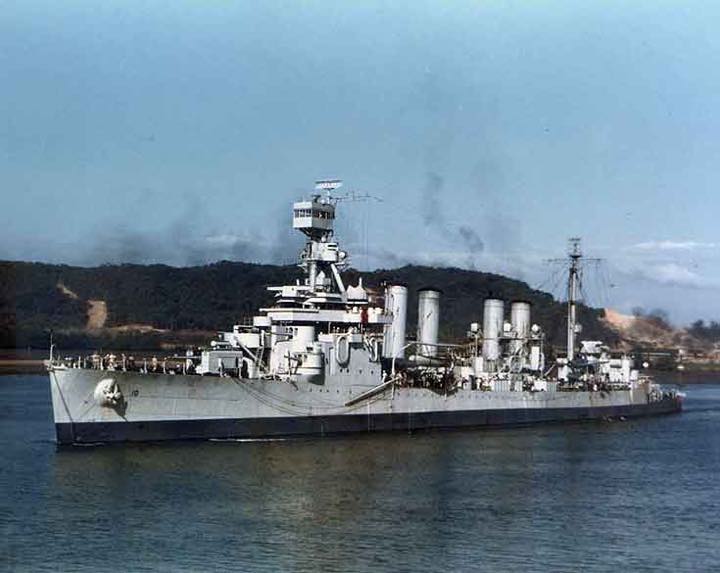USS Concord CL-10

Concord IV
(CL-10: dp. 7,060; 1. 555'6";; b. 56'4"; dr. 13'6"; s 34
k.; cpl. 468; a. 12 6", 4 3", 10 21" tt.; cl. Omaha
The fourth Concord (CI - 10) was launched 16 December 1921 by William Cramp and Sons, Philadelphia, Pa. sponsored by Miss H. Butterick, and commissioned 3 November 1923, Captain O. G. Murfin in command.
On her maiden cruise, between 23 November 1923 and 9 April 1924, Concord called at Mediterranean ports, passed through the Suez Canal to round the Cape of Good Hope, and exercised with the fleet in the Caribbean before returning to Philadelphia. As flagship of Commander, Destroyer Squadrons, Scouting Fleet, she cruised the Caribbean and sailed through the Panama Canal to exercise in the Hawaiian Islands in 1924 and 1926. Continuing to operate in the Atlantic, she joined in the Presidential Fleet Review taken by Herbert Hoover on 4 June 1927.
Serving as flagship of Commander, Cruiser Division 3, Battle Force, Concord cruised the Pacific from her base at San Diego after early 1932, exercising in the Canal Zone and the Caribbean in 1934. She took part in Presidential Fleet Reviews taken by Franklin D. Roosevelt on 30 September 1936 and 12 July 1938, and joined in fleet exercises in the Hawaiian area, in the Canal Zone, and off Alaska. After operating on the east coast in the winter of 1938-39, she returned to Pacific operations, and from 1 April 1940 was based at Pearl Harbor for a training schedule which intensified as war came closer.
When the United States entered the war, Concord was at San Diego preparing for a shipyard overhaul which she completed early in February 1942. Assigned to the Southeast Pacific Force, she escorted convoys to Bora Bora in the Society Idanda, exercised in the Canal Zone, and cruised along the coast of South America and to the islands of the southeast Pacific, serving from time to time as flagship of her force. Between 6 September and 24 November 1943, she carried Rear Admiral R. E. Byrd on a tour to survey' the potential use of a number of southeast Pacific islands in national defense and commercial aviation. During this cruise, she suffered a gasoline explosion which killed 22 men including her executive officer, and caused considerable damage, which was repaired at Balboa.
With repairs completed in March 1944, Concord set sail northward to join the Northern Pacific Force at Adak 2 April. Serving as TF 94's flagship at the beginning of this duty, she joined in bombardments of the Kuriles which continued at intervals until the close of the war, preventing effective use by the Japanese of their bases there. Harassing the northern shipping lanes of Japan, her force sank several small craft, and on 26 August 1944, the destroyers of the force made an attack on a Japanese convoy.
On 31 August 1945, Concord stood out from Adak, covered the occupation landings at Ominato, Japan between 8 and 14 September, and sailed on to Pearl Harbor, the Cunal Zone, Boston, and Philadelphia, where she was decommissioned 12 December 1945 and sold 21 January 1947.
Concord received one battle star for World War II service.
 >
>